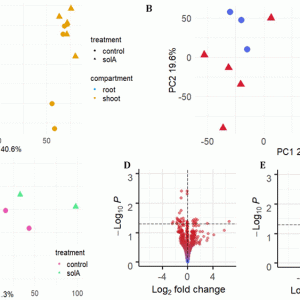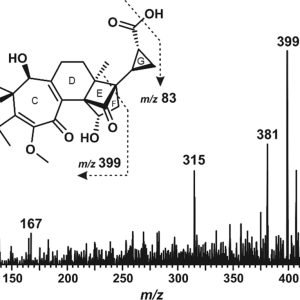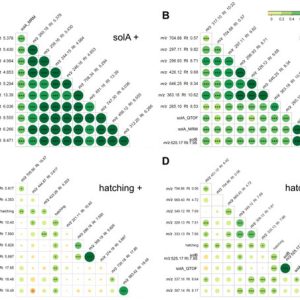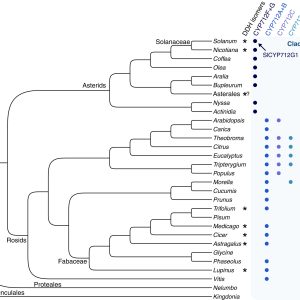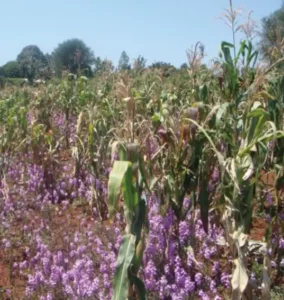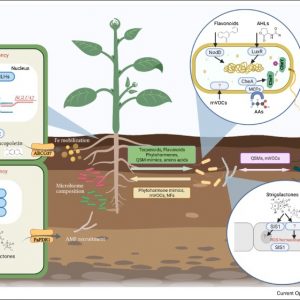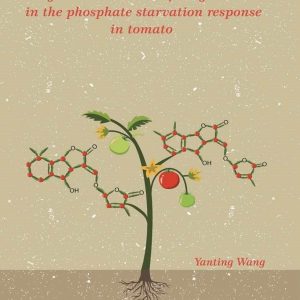Scholar
This page is dedicated to an overview of publications at the Metabolism Lab and up-to-date article collections related to our research themes.
All Metabolism Lab Publications
Other Publications
Google Scholar
- S.(2024, March 27) L Díaz - from https://hdl. handle. net/1887/3729491 … - scholarlypublications … Tuesday 02 April 2024 Volatiles are not mere by-products of primary metabolism plantmicrobe interactions that are important for plant to the volatiles of its nitrogen-fixing symbiont
- Integrated effect of plant growth promoting rhizobacteria with Trichoderma Viride on root knot nematode infected eggplant MM El-Deriny, RH Wahdan, MS Fouad… - Pakistan Journal of …, 2024 - researchgate.net Friday 19 July 2024 In suppressing plant parasitic nematodes and improving against nematodes and interfered with other microbes ), and nitrogen (N)levels increased in the eggplants upon
- Variation in a microbial mutualist has cascading consequences for host-parasite interactions A Buxton-Martin, E Gluck-Thaler, E Yi, JR Stinchcombe… - bioRxiv, 2024 - biorxiv.org Friday 19 July 2024 Of nitrogen-fixing rhizobial bacteria affect their host plant on the hosts interaction with other microbes? The answer to this carbohydrate metabolism in galls and nematode
- Vegetable residues retention: An effective and environment friendly way to handle tomato wastes from greenhouse production X Sun, S Chen, H Li, J Li, G Han, H Dong, J Che… - European Journal of Soil …, 2024 - Elsevier Tuesday 27 February 2024 Of soil fungi and plant parasitic nematodes, with reductions ranging growth, and enhancing metabolism [54]. To some extent anaerobic bacteria dominate the soil microbial
- … the root bacterial community of Ficus tikoua responds to nematode infection: enrichments of nitrogen-fixing and nematode-antagonistic bacteria in the parasitized … XR Meng, Y Gan, LJ Liao, CN Li, R Wang… - Frontiers in Plant …, 2024 - frontiersin.org Friday 07 June 2024 Plant-parasitic nematodes (PPNs) are among the most damaging on the pathways associated with metabolism. of the interaction among soil nitrogensupplying bacteria,
- Chitosan reduces naturally occurring plant pathogenic fungi and increases nematophagous fungus Purpureocillium in field soil R Lopez-Nunez Sr, J Prieto-Rubio… - bioRxiv, 2024 - biorxiv.org Thursday 04 July 2024 22 Although, no differences in soil mineral nitrogen were nematode destroying fungi (Barron 1997): nematode microorganism against two important plant pathogenic
- Arbuscular Mycorrhizal Fungi: A Potential Agent for Phytonematodes Management in Diverse Agro-climatic Zones N Keshari, K Kranti, NK Gunda, RA Ansari - Mycorrhizal Symbiosis and …, 2024 - Springer Friday 09 February 2024 Or nodulating rhizobial bacteria and plants are mutual and Plant parasitic nematodes and plant symbionts share the Plant functional groups such as non-nitrogen-fixing
- A soybean cyst nematode suppresses microbial plant symbionts using a lipochitooligosaccharide-hydrolysing enzyme W Chen, D Wang, S Ke, Y Cao, W Xiang, X Guo… - Nature …, 2024 - nature.com Tuesday 18 June 2024 Only in meeting plant nutritional needs for nitrogen and cyst nematodes could hamper the symbiotic interaction 14 plant-parasitic and 42 non-plant-parasitic nematode
- Cellular and molecular organization in Arabidopsis galls induced by Meloidogyne incognita. OM Mwaura - libstore.ugent.be Monday 22 January 2024 The nitrogen-fixing bacterial in leguminous plants, for secondary infection by pathogen microbes such as Fusarium Plant parasitic nematodes are among the major players
- ow root bacterial community of Ficus tikoua respond to nematode infection: enrichments of nitrogen-fixing and nematode-antagonistic bacteria in the parasitized … XR Meng, Y Gan, LJ Liao, CN Li, R Wang, M Liu… - Frontiers in Plant … - frontiersin.org Friday 07 June 2024 Plant-parasitic nematodes (PPNs) are among the most plant-nematode-bacterium interactions in host plants information for successful nematode managements when
- lant-microbe interaction to improve soil health N Dhiman, J Uthoff, B Scharf, V Kumar - … in Microbial Biotechnology for Soil …, 2024 - Springer Tuesday 19 March 2024 Plant, fungi, and plant-pathogenic nematodes and (2) nitrogen-fixing symbiotic microbes in different plant formations by modulating plant physiology and metabolism. For
- Characterization of some species of Pratylenchus infecting crops in India AH SHEIKH - krishikosh.egranth.ac.in Saturday 04 May 2024 Some of these nematodes, which feed on bacteria and fungi, by converting organic nitrogen to inorganic nitrogen. A useful The plant-parasitic nematode is one of the most
- eneficial Microbes in Soil Health and Crop Productivity L Khalili, RZ Sayyed, Z Naureen, SA Gilani… - Plant Holobiome …, 2024 - Springer Thursday 16 May 2024 , actinomycetes, fungi, protozoa, viruses, and nematode, play a nitrogen fixation, acquisition and utilization of key nutrients, suppression of pathogenic microorganisms,
- ong-term push–pull cropping system shifts soil and maize-root microbiome diversity paving way to resilient farming system AA Jalloh, FM Khamis, AA Yusuf, S Subramanian… - BMC microbiology, 2024 - Springer Monday 18 March 2024 Production, nitrogen fixation, nematode suppression, improves soil health by fixing nitrogen, facilitating carbon Soil microbial communities contribute to plant health
- iotic Interactions SC Bhatla, MA Lal - Plant Physiology, Development and Metabolism, 2023 - Springer Wednesday 06 December 2023 The prokaryotes provide nitrogen to the host plant. Some defense responses of plants to microbial pathogenic infections. Plant parasitic nematodes are classified as
Elservier Scopus
- Root and soil health management approaches for control of plant-parasitic nematodes in sub-Saharan Africa Karuri, Hannah Crop Protection, volume 152 Saturday 04 December 2021 Smallholder farmers in sub-Saharan Africa (SSA) face several challenges that include pests and diseases. Plant-parasitic nematodes (PPN) reduce crop yields and affect their quality. They are an emerging threat to smallholder agriculture with several species attacking economically important crops. In SSA, most PPN control strategi... Smallholder farmers in sub-Saharan Africa (SSA) face several challenges that include pests and diseases. Plant-parasitic nematodes (PPN) reduce crop yields and affect their quality. They are an emerging threat to smallholder agriculture with several species attacking economically important crops. In SSA, most PPN control strategies are therapeutic and therefore unsustainable. Cost-effective nematode management strategies that promote soil health and enhance soil suppressiveness against PPN are therefore needed. These strategies can fit into most smallholder cropping systems and in addition to controlling PPN, they also promote soil and plant health and tolerance to other diseases. Most smallholders in SSA still use traditional farming methods although some countries have adopted conservation agriculture (CA) and integrated soil fertility management (ISFM). This review analyzes the potential impact of CA and ISFM on PPN communities and it also provides a concise summary of low-cost PPN control strategies and their efficiency against specific nematode species. Variations in their efficacy is also discussed. The strategies are proposed for adoption across SSA based on site-specific conditions.
- Physiological and transcriptional response of carbohydrate and nitrogen metabolism in tomato plant leaves to nickel ion and nitrogen levels Li, Shuhao, Yang, Danqing, Tian, Jun, Wang, Shubin, Yan, Yinan, He, Xiaoli, Du, Zhijie, Zhong, Fenglin Scientia Horticulturae, volume 292 Friday 03 December 2021 This study investigated how nickel ion (Ni2+) improves carbohydrate and nitrogen (N) metabolism in tomato plant leaves under different N supply levels. We exposed the tomato plants to two levels of N (7.66 and 0.383 mmol•L−1) and two levels of Ni2+ (0 and 0.1 mg•L−1 NiSO4) under hydroponic conditions. After nine days of t... This study investigated how nickel ion (Ni2+) improves carbohydrate and nitrogen (N) metabolism in tomato plant leaves under different N supply levels. We exposed the tomato plants to two levels of N (7.66 and 0.383 mmol•L−1) and two levels of Ni2+ (0 and 0.1 mg•L−1 NiSO4) under hydroponic conditions. After nine days of treatments, we harvested the leaves for physiological, biochemical, and transcriptome sequencing analysis. Low N (LN) levels reduced the concentration of total N and the activities of enzymes; however, Ni2+ can regulate these levels. Leaf transcriptome analysis identified 3277 differentially expressed genes (DEGs). The DEGs associated with the glycolytic pathway-tricarboxylic acid (EMP pathway-TCA) cycle, biosynthesis of amino acids, and N metabolism were downregulated after low N application, whereas those regulated by Ni2+ showed high transcript abundances. This study provides valuable insights into the carbohydrate and N metabolism mechanism of tomato plant leaves in response to Ni2+ and N levels.
- Lipid accumulation by Coelastrella multistriata (Scenedesmaceae, Sphaeropleales) during nitrogen and phosphorus starvation Maltsev Y. Scientific Reports, volume 11 Friday 03 December 2021
- Genome-mining for stress-responsive genes, profiling of antioxidants and radical scavenging metabolism in hyperaccumulator medicinal and aromatic plants Mishra, Bhawana, Chandra, Muktesh, Pant, Deepak Industrial Crops and Products, volume 173 Wednesday 01 December 2021 Medicinal and aromatic plants (MAPs) possess phytoremediation potential owing to antioxidants, secondary metabolites, and morphological features. Moringa oleifera, Pelargonium graveolens, Tagetes patula, and Calotropis gigantea are known for their phytoremediation properties in heavy metals polluted soil. These plants with phytor... Medicinal and aromatic plants (MAPs) possess phytoremediation potential owing to antioxidants, secondary metabolites, and morphological features. Moringa oleifera, Pelargonium graveolens, Tagetes patula, and Calotropis gigantea are known for their phytoremediation properties in heavy metals polluted soil. These plants with phytoremediation properties due to antioxidants, specific secondary metabolites synthesis, and distinctive morphological characteristics ultimately become the ideal choice for effective remediation. The main aim of the current study is to provide a genetic evaluation using bioinformatics techniques, antioxidant compounds, metabolites, and their activity. Genomic and transcriptomic studies endorsed genes related to hyperaccumulation in these plant species having essential domains as catalase (CAT) and superoxide dismutase (SOD_Cu, SOD_Fe_C, and SOD_Fe_N). The phylogenetic study showed its close evolutionary relationship to other plant species. The accumulation of total photosynthetic pigments, carotenoids, non-enzymatic antioxidants, and enzymatic antioxidants determined spectrophotometrically, involved in stress tolerance and ROS homeostasis maintenance mechanisms. Tagetes leaves showed the highest proline, flavonoids, and phenolics content, while Moringa showed higher CAT, guaiacol peroxidase (G-POD), and glutathione peroxidase (GPX) activities. Results also revealed that plants accumulated more primary and secondary metabolites in young tissue to tackle pathogens, herbivores, attract pollinators, and in mature tissues to develop strong physiology. Total antioxidant activity, reducing power, and radical scavenging activities were observed. These MAPs have intriguing antioxidant characteristics and a phytochemical composition that might give scientific support for their stress tolerance and ROS management activities. The study establishes the groundwork for using MAPs as phytoremediators; further confirmatory research is required for their use in sustainable phytoremediation.
- Marasmius oreades agglutinin enhances resistance of Arabidopsis against plant-parasitic nematodes and a herbivorous insect Moradi A. BMC Plant Biology, volume 21 Tuesday 30 November 2021
- Alpha-tocopherol reinforce selenium efficiency to ameliorates salt stress in maize plants through carbon metabolism, enhanced photosynthetic pigments and ion uptake Khalil, Radwan, Yusuf, Mohammad, Bassuony, Fardous, Haroun, Samia, Gamal, Amina South African Journal of Botany, volume 144, pages 1-9 Monday 29 November 2021 Individually selenium and α-tocopherol showed a pivotal role in combating abiotic stresses in plants. However, there is no report on how selenium behaves in the presence or absence of α-tocopherol under salt stress in crop plants. With this view, the present study was undertaken to dissect the interaction between selenium... Individually selenium and α-tocopherol showed a pivotal role in combating abiotic stresses in plants. However, there is no report on how selenium behaves in the presence or absence of α-tocopherol under salt stress in crop plants. With this view, the present study was undertaken to dissect the interaction between selenium and α-tocopherol on growth performance, carbon metabolism, and uptake of different ions in maize plants grown under salt stress. This study was conducted with surface-sterilized seeds of maize that were soaked in deionized water (control), selenium (0.5 µM), and/or α-tocopherol (200 ppm) for 12 h before sowing and different salt levels (0, 100, 150, and 200 mM) in the form of NaCl was created in soil. A sample of maize plants from each treatment was collected 40 days after sowing. The results revealed that salinity lowered the growth performance, chlorophyll content, insoluble sugar, carbohydrate, phenolic, flavonoid content, and different ions uptake in concentration dependent manner whereas, soluble sugar, α-amylase activity, and sodium ion increased in comparison to control plants. Moreover, selenium and/or α-tocopherol treated plants without stress significantly amplified the growth performance, chlorophyll and carotenoid content, carbohydrate, phenolic, and flavonoid content, and improved the uptake of different concentrations ions (K+, Ca+2, K+/Na+, Ca+2/Na+, and Mg+2) over the control plants. Interestingly, treatment of combined selenium and α-tocopherol to the salt-stressed plants successfully recover the loss caused by increasing salt levels in maize plants through altered carbon metabolism and ions uptake reflected in improved growth performance and bigger growth leaf area of maize plants under salt stress. Selenium and α-tocopherol in combination also enhance the antioxidative defensive mechanism through the production of phenolics and flavonoids content in maize plants under salt stress. This approach could be an effective measure to lower salt stress and enhance the crop productivity of maize plants.
- Identification of key genes in the biosynthesis pathways related to terpenoids, alkaloids and flavonoids in fruits of Zanthoxylum armatum Wenkai, Hui, Jingyan, Wang, Lexun, Ma, Feiyan, Zhao, Luping, Jia, Yu, Zhong, Shaobo, Zhang, Wei, Gong Scientia Horticulturae, volume 290 Sunday 28 November 2021 Zanthoxylum armatum is an important economic tree for the food and pharmaceutical industries, due to its the special numbing taste. Despite having highly volatile aromatic compounds, the cultivars of Z. armatum are underexplored for genetics and molecular breeding programs. In this study, we integrated the f... Zanthoxylum armatum is an important economic tree for the food and pharmaceutical industries, due to its the special numbing taste. Despite having highly volatile aromatic compounds, the cultivars of Z. armatum are underexplored for genetics and molecular breeding programs. In this study, we integrated the fruit development and maturation process across eight samples (Fr1 to Fr8) in Z. armatum. From the Fr1 to Fr4 stage, the fruit grew rapidly to a certain size, however, in subsequent stages (Fr5 to Fr8) the fruit size did not increase but inclusions began to accumulate within the oil vacuole. Additionally, the significantly differentially expressed genes in the fruit compared with other organs (root, stem, leaves, and bud) were screened and enriched in 17 KEGG pathways, including 28 genes for terpenoids, 5 genes for alkaloids and 7 genes for flavonoid biosynthesis processes. Furthermore, some bioinformatic analyses were performed to obtain more information about these genes. Moreover, the RT-qPCR results of all vital genes selected in present study showed that the Fr4 stage was the core phase for the biosynthesis of numbing taste compounds in Z. armatum. To the best of our knowledge, this study is the first comprehensive analysis to identify the key genes associated with terpenoid, alkaloid and flavonoid biosynthesis processes in the fruit of Z. armatum. Our results will provide an insight into explore the genetic mechanism of numbing taste in Zanthoxylum, which will be helpful for identifying and breeding some high-quality varieties.
- Arsenic transport and interaction with plant metabolism: Clues for improving agricultural productivity and food safety Zhang, Jie, Hamza, Ameer, Xie, Zuoming, Hussain, Sajad, Brestic, Marian, Tahir, Mukkram Ali, Ulhassan, Zaid, Yu, Min, Allakhverdiev, Suleyman I., Shabala, Sergey Environmental Pollution, volume 290 Saturday 27 November 2021 Arsenic (As) is a ubiquitous metalloid that is highly toxic to all living organisms. When grown in As-contaminated soils, plants may accumulate significant amounts of As in the grains or edible shoot parts which then enter a food chain. Plant growth and development per se are also both affected by arsenic. These effects are tradi... Arsenic (As) is a ubiquitous metalloid that is highly toxic to all living organisms. When grown in As-contaminated soils, plants may accumulate significant amounts of As in the grains or edible shoot parts which then enter a food chain. Plant growth and development per se are also both affected by arsenic. These effects are traditionally attributed to As-induced accumulation of reactive oxygen species (ROS) and a consequent lipid peroxidation and damage to cellular membranes. However, this view is oversimplified, as As exposure have a major impact on many metabolic processes in plants, including availability of essential nutrients, photosynthesis, carbohydrate metabolism, lipid metabolism, protein metabolism, and sulfur metabolism. This review is aimed to fill this gap in the knowledge. In addition, the molecular basis of arsenic uptake and transport in plants and prospects of creating low As-accumulating crop species, for both agricultural productivity and food safety, are discussed.
- Polyamine and nitrogen metabolism regulation by melatonin and salicylic acid combined treatment as a repressor for salt toxicity in wheat (Triticum aestivum L.) plants Talaat N.B. Plant Growth Regulation, volume 95, pages 315-329 Friday 26 November 2021
- Genetic response to nitrogen starvation in the aggressive Eucalyptus foliar pathogen Teratosphaeria destructans Havenga M. Current Genetics, volume 67, pages 981-990 Thursday 25 November 2021
- Biosynthesis and regulation of terpenoids from basidiomycetes: exploration of new research Wang Q. AMB Express, volume 11 Sunday 21 November 2021
- A KBase case study on genome-wide transcriptomics and plant primary metabolism in response to drought stress in Sorghum. Kumari, Sunita, Kumar, Vivek, Beilsmith, Kathleen, Seaver, Samuel M.D., Canon, Shane, Dehal, Paramvir, Gu, Tian, Joachimiak, Marcin, Lerma-Ortiz, Claudia, Liu, Filipe, Lu, Zhenyuan, Pearson, Eric, Ranjan, Priya, Riel, William, Henry, Christopher S., Arkin, Adam P., Ware, Doreen Current Plant Biology, volume 28 Saturday 20 November 2021 A better understanding of the genetic and metabolic mechanisms that confer stress resistance and tolerance in plants is key to engineering new crops through advanced breeding technologies. This requires a systems biology approach that builds on a genome-wide understanding of the regulation of gene expression, plant metabolism, physiology and growth... A better understanding of the genetic and metabolic mechanisms that confer stress resistance and tolerance in plants is key to engineering new crops through advanced breeding technologies. This requires a systems biology approach that builds on a genome-wide understanding of the regulation of gene expression, plant metabolism, physiology and growth. In this study, we examine the response to drought stress in Sorghum, as we leverage the tools for transcriptomics and plant metabolic modeling we have implemented at the U.S. Department of Energy Systems Biology Knowledgebase (KBase). KBase enables researchers worldwide to collaborate and advance research by uploading private or public data into the KBase Narrative Interface, analyzing it using a rich, extensible array of computational and data-analytics tools, and securely sharing scientific workflows and conclusions. We demonstrate how to use the current RNA-seq tools in KBase, applicable to both plants and microbes, to assemble and quantify long transcripts and identify differentially expressed genes effectively. More specifically, we demonstrate the utility of the platform by identifying key genes differentially expressed during drought-stress in Sorghum bicolor, an important sustainable production crop plant. We then show how we can use KBase tools to predict the membership of genes in metabolic pathways and examine expression data in the context of metabolic subsystems. We demonstrate the power of the platform by making the data, analysis and interpretation available to the biologists in the reproducible, re-usable, point-and-click format of a KBase Narrative thus promoting FAIR (Findable, Accessible, Interoperable and Reusable) guiding principles for scientific data management and stewardship.
- Recent studies on terpenoids in Aspergillus fungi: Chemical diversity, biosynthesis, and bioactivity Zhao, Wen-Yu, Yi, Jing, Chang, Yi-Bo, Sun, Cheng-Peng, Ma, Xiao-Chi Phytochemistry, volume 193 Thursday 18 November 2021 Metabolites from fungi are a major source of natural small molecule drugs in addition to plants, while fungal derived terpenoids have been confirmed to have great potentials in many diseases. Aspergillus fungi are distributed in every corner of the earth, and their terpenoid metabolites exhibit promising diversity in term of both... Metabolites from fungi are a major source of natural small molecule drugs in addition to plants, while fungal derived terpenoids have been confirmed to have great potentials in many diseases. Aspergillus fungi are distributed in every corner of the earth, and their terpenoid metabolites exhibit promising diversity in term of both their chemistry and bioactivity. This review attempted to provide timely and comprehensive coverage of chemical, biosynthesis, and biological studies on terpenoids discovered from the genus Aspergillus, including mono-, sesqui-, di-, sester-, tri-, and meroterpenoids, in the last decade. The structural characteristics, biosynthesis, and pharmacological activities of 288 terpenoids were introduced.
- Calcium silicate ameliorates zinc deficiency and toxicity symptoms in barley plants through improvements in nitrogen metabolism and photosynthesis Paradisone V. Acta Physiologiae Plantarum, volume 43 Wednesday 17 November 2021
- Plant Ingredient diet supplemented with lecithin as fish meal and fish oil alternative affects growth performance, serum biochemical, lipid metabolism and growth-related gene expression in Nile tilapia El-Naggar K. Aquaculture Research, volume 52, pages 6308-6321 Wednesday 17 November 2021
You can increase your reach by push your tweets onto below overview by using @metabolism_lab.
Twitter Activity
Twitter feed is not available at the moment.

